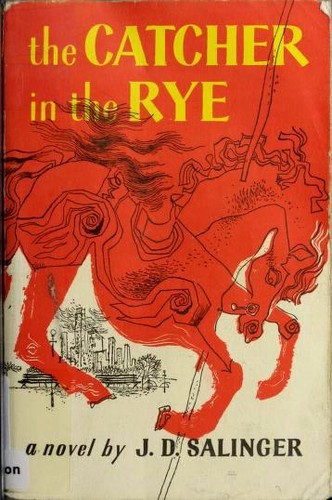Zelanator reviewed The Catcher in the Rye by J. D. Salinger
Review of 'The Catcher in the Rye' on 'Goodreads'
5 stars
Published in 1951, J. D. Salinger’s Catcher in the Rye focuses on the teenage angst of Holden Caulfield, a depressed seventeen year old undergoing treatment in a nondescript mental institution. Caulfield narrates his expulsion from an elite private school, Pencey Preparatory Academy and what happens to him after he runs away from the school a few days prior to Christmas Break to sojourn alone through the red light districts of Manhattan. His odyssey carries him through various experiences that begin to clarify his outlook on life and his opinions about the world.
Salinger wrote Caulfield’s coming-of-age story in the years immediately following the Second World War, initially as a serialized set of short stories before its eventual publication in a novel format. One of the most salient themes in this book is the tension between individualism and conformity in postwar American society. Salinger prefigures many issues later articulated by the beatniks and the counterculture during the late-1950s and 1960s—primarily that American culture and its attendant social relations during postwar years became one of routine, crass materialism, solidified gender and socioeconomic roles, and the leveling of individual self-expression. Or, as Holden Caulfield would say, Americans had become “phony.”
Holden is an extremely precocious high school student. He suffers from depression, but more specifically something akin to cyclothymic disorder: a milder form of bipolar disorder in which individuals suffer from extremely short-lived oscillations between depression and mania. There are moments when Holden feels he could conquer the world, such as when he invites Sally Hayes to run away with him to Connecticut where he would seek employment and support them in a hardscrabble existence suffused with authentic feeling. At other times, something as simple as conversing with nuns in a diner can spiral Holden into “sadness,” as he contemplates various pitiful visions of their lives. There are also some inflections of Henry David Thoreau’s transcendental writings in Holden’s worldview and there is not-so-subtle nods toward Walden in some of the narrator’s musings.
By-and-large, Holden’s inability to “fit” into society hails from his obsession about authenticity. He seeks authentic experiences and authentic people, and finds that most of the world and its inhabitants operate like automatons by saying and doing things not from a wellspring of true sentiments but from the sustainment of pretense and artifice to get what they want (sex, money, power, reputation). There are many examples of how Holden shies away from inauthentic experiences in the book. The most poignant, perhaps, is when Holden hastily decides to pay for a prostitute after an elevator attendant in his seedy hotel offers Holden “five dollars for a throw” if he needs company. When the prostitute enters Holden’s hotel room his teenage curiosity about sex and the desire to feel physical intimacy becomes subverted by the sudden realization that the entire transaction was based on something other than pure feeling. Holden admits to an acquaintance later that he would need to “like a girl” before he could consider having sex with her. Salinger deftly handles sexuality in this book in ways that belies the belief that America during the 1950s was extremely conservative about sex. There’s definitely a nod toward the existence of the Kinsey Reports inherent in Salinger’s approach to sexuality here.
There’s a lot of appeal to this book even today. For all the emphasis placed on individual expression in 2022, there remains a strong undercurrent of conformism in our culture wherein even those hoping to proclaim their individuality have unwittingly fallen into the trap of becoming part of the crowd. Many will find Holden Caulfield’s cynicism familiar as our level of distrust in institutions is far stronger now than when Salinger composed this novel.

